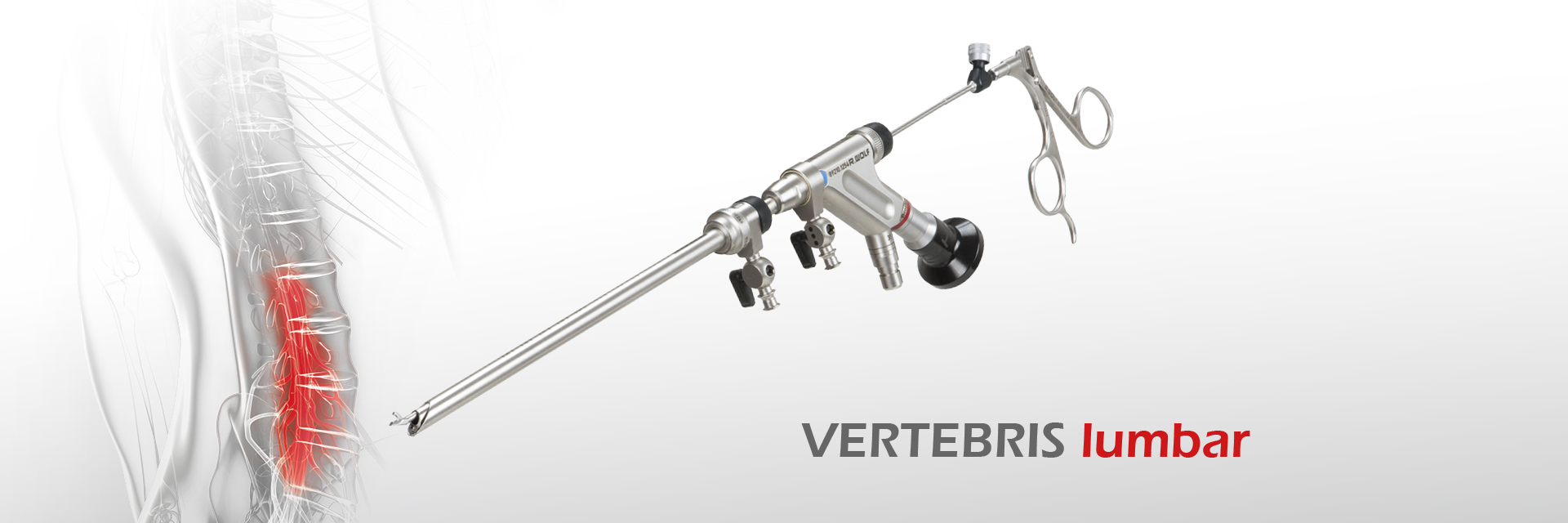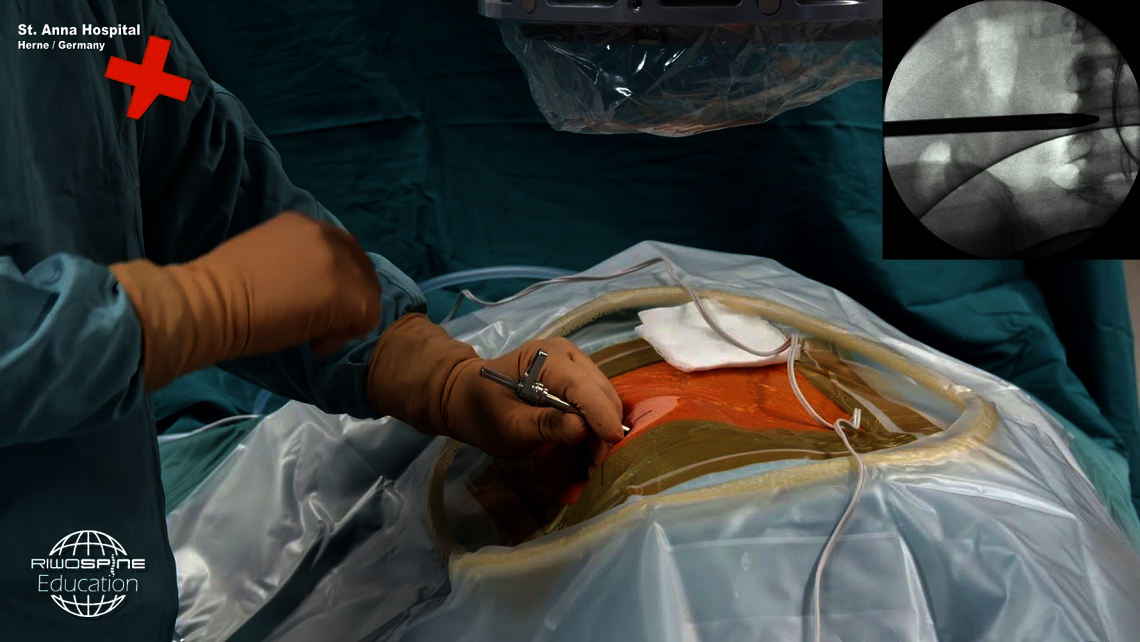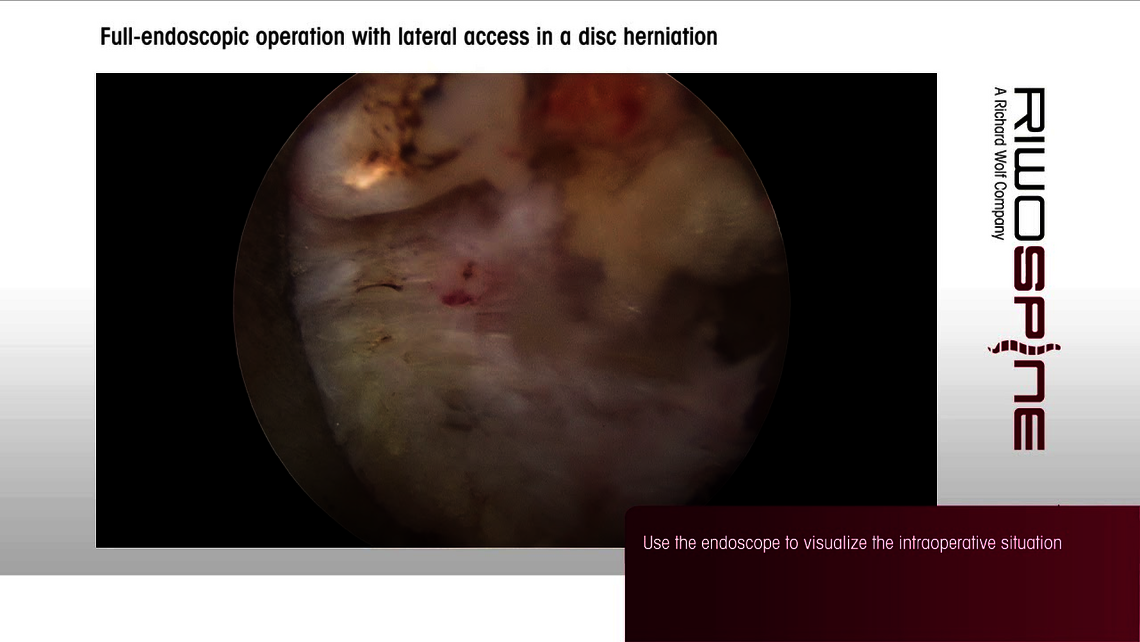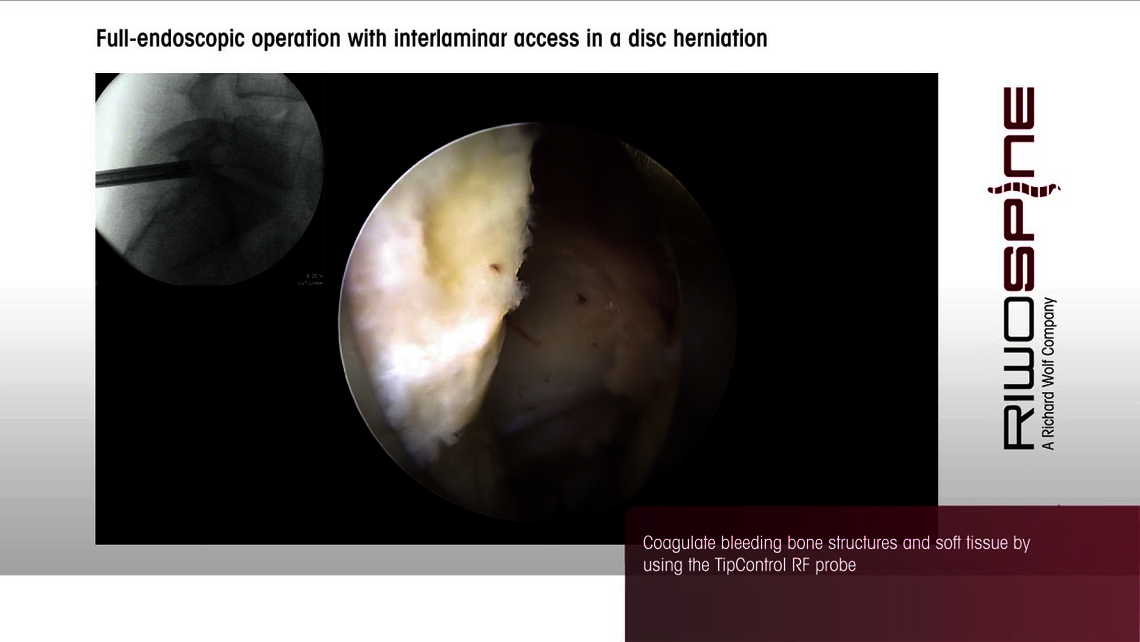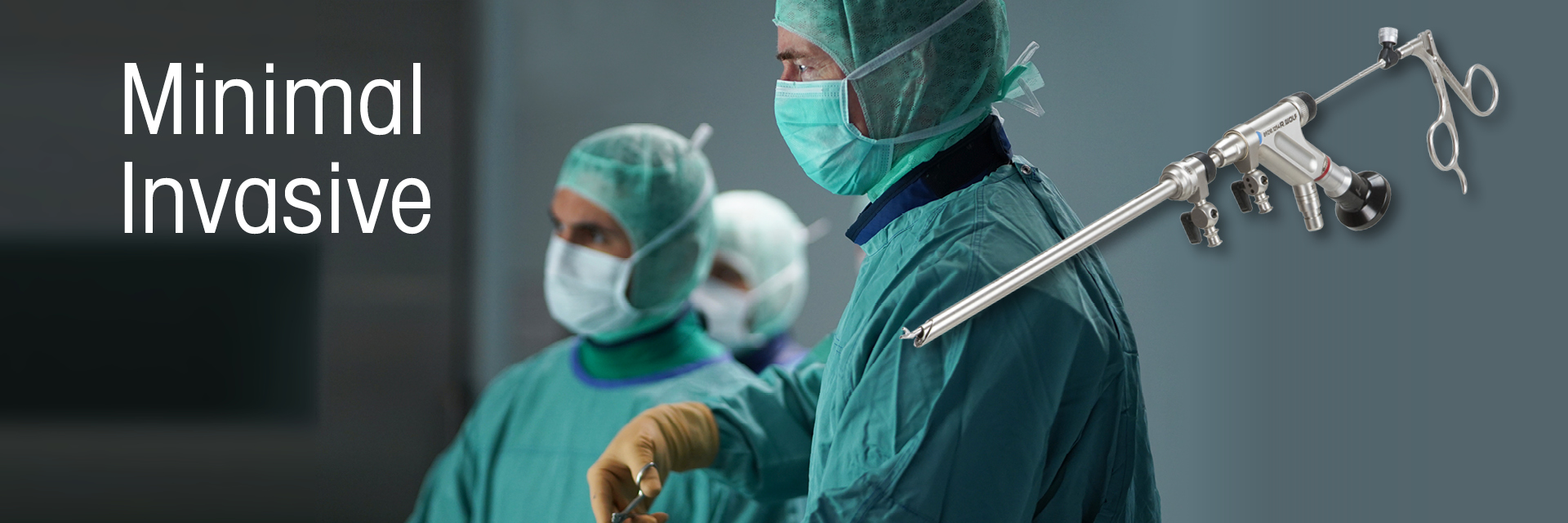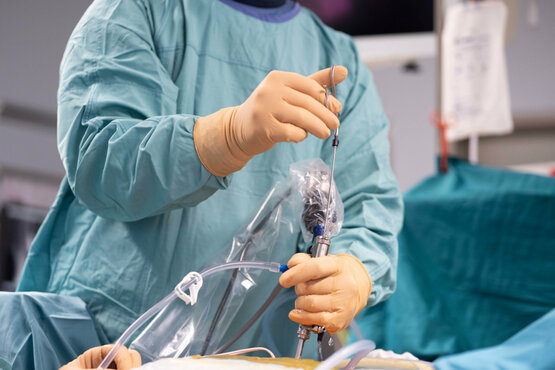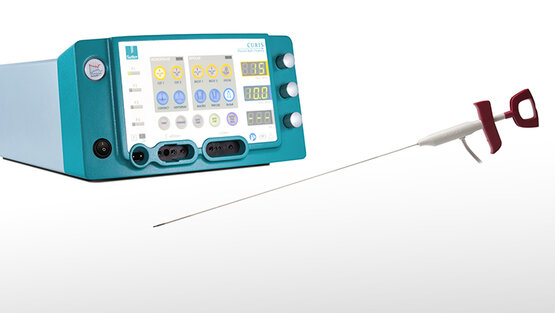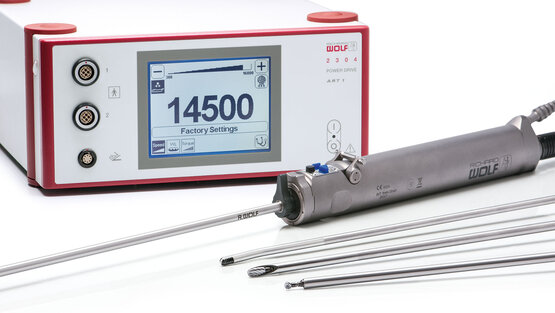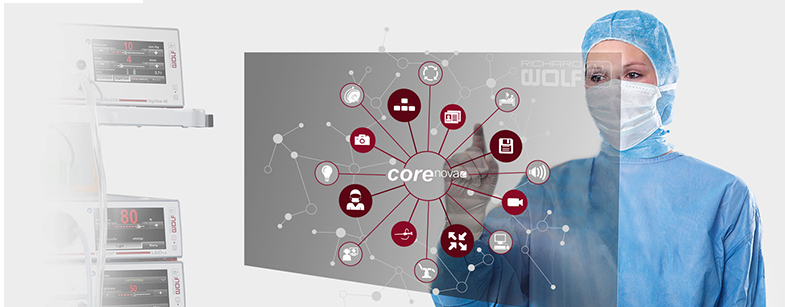Takes the Pressure
The VERTEBRIS lumbar instrument set is designed for full-endoscopic decompression of the lumbar and thoracic spine. Typical indications include herniated discs, spinal cysts and spinal stenosis. Depending on the indications and anatomy, one of several full-endoscopic approaches can be selected:
- Transforaminal
- Extraforaminal
- Interlaminar
The excellent optical properties of VERTEBRIS endoscopes are the foundation for intraoperative visualization and the ability to precisely guide specialized instruments in the intraoperative area.
The modularity of the instrument systems makes it possible to expand the indications by adding new components as necessary.
Transforaminal / extraforaminal technique
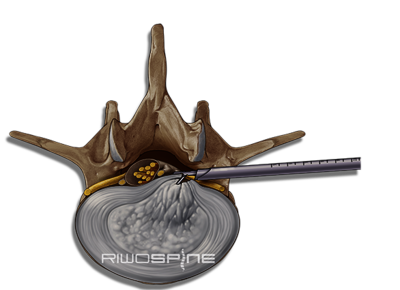
The transforaminal approach makes use of the spinal column’s natural opening, the intervertebral foramen (via Kambin’s triangle) to provide access without significant ligamentous or bony resections. The "inside-out" transforaminal approach targets the interior of the disc and is a straightforward technique that is well suited for first cases. As more skill is developed, this approach can be modified to address an expanded range of indications.
The extraforaminal approach (also referred to as the "outside-in" technique) first targets the pedical and allows the surgeon to directly address extradiscal herniations or bony stenosis. It also allows the surgeon to use burrs to widen the foramen (for better access or to address stenosis) under direct visualization.
All transforaminal / extraforamnal techniques start with a spinal needle placed under fluoroscopic control to establish the access trajectory. The insertion point, angle of approach, and target point are all determined by the individual pathology and anatomy. After dilation and insertion of a working sleeve, surgery is performed under continuous irrigation and direct visualization with the high-resolution endoscope and video system.
Precision instruments such as forceps, punches, electrodes and burrs with a special design enable the surgeon to perform the surgery effectively and precisely.
VERTEBRIS transforaminal
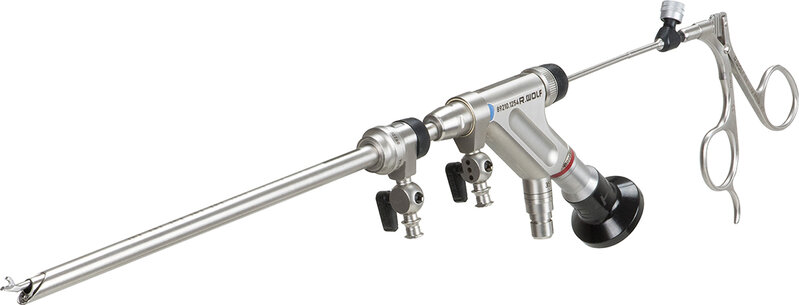
- High-resolution endoscopes with working length for posterolateral and lateral transforaminal approach.
- Optimized ratio of large working channel to outside diameter for minimal invasive access and effective operation.
- Fluid management optimized by engineered dimensioning of inflow and outflow preventing neural compression by high pressures of the irrigation fluid.
- Working sleeves with atraumatic distal design to protect neural structures and variety of tip styles for multiple indications.
- Stable grasping forceps and punches with overload protection for effective soft tissue and bone resection.
- Endoscopic high-speed and articulating motor systems with reusable and disposable tools for mechanical bone and soft tissue resection.
- TipControl RF electrodes for high frequency coagulation.
Interlaminar technique
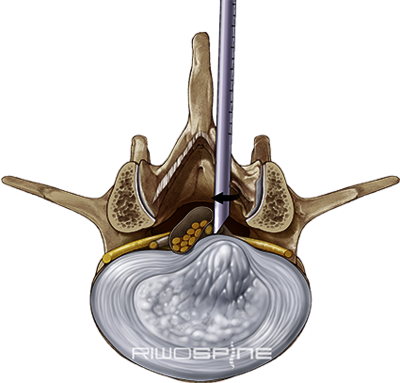
The interlaminar approach allows access to the spinal canal via the posterior interlaminar window. The dilator is guided directly to the ligamentum flavum using minimal fluoroscopy and no needle is required. After placing the working sleeve over the dilator, the operation is performed through the high-definition spine endoscope utilizing continuous irrigation. The design of the system is optimized to provide full functionality of instruments under exceptional visualization, but with a narrow profile that minimizes trauma to the soft tissues, ligamentum flavum and neural structures.
With special manual instruments, the ligamentum flavum is incised, the neural structures retracted, and the herniation removed. A variety of high-speed burrs are available that allow removal of bone in order to address cases of spinal stenosis or to widen the interlaminar window for improved access.
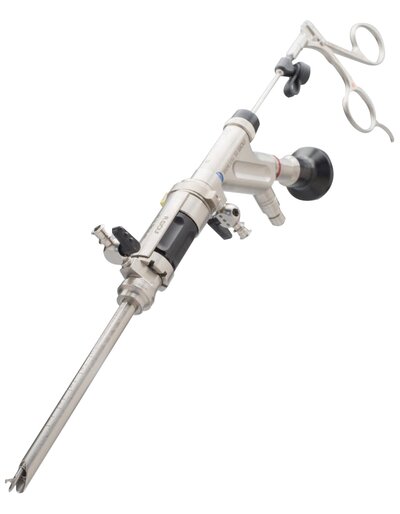
VERTEBRIS interlaminar
- High resolution endoscopes with shorter working length for interlaminar approach.
- Endoscope adapter to control the distance between endoscope and working sleeve for more ergonomic operation.
- Optimized ratio of large working channel to working sleeve diameter for minimal invasive access and effective operation.
- Fluid management optimized by engineered dimensioning of inflow and outflow preventing neural compression by high pressures of the irrigation fluid.
- Working Sleeves with atraumatic distal design to protect neural structures.
- Stable grasping forceps and punches with shorter working length and overload protection for use in the interlaminar approach.
- Endoscopic high-speed motor system with reusable and disposable tools for mechanical bone and soft tissue resection for lateral recess stenosis.
- TipControl electrodes for high frequency coagulation.
Radiofrequency Surgical System Burrs and Shaver System
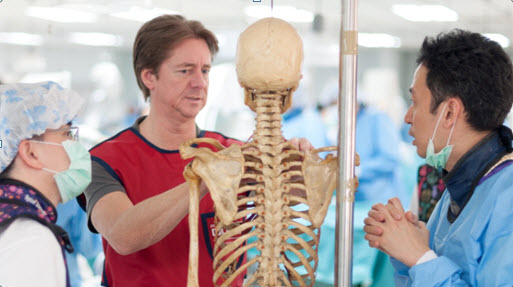
Education
The RIWOspine education program offers excellent opportunities to learn about full-endoscopic techniques for spine surgery and interventional percutaneous spine pain therapy.
The program is a comprehensive training concept, consisting of different modules that progress physicians toward successful implementation of these innovative techniques in their hospitals or surgery centers.
